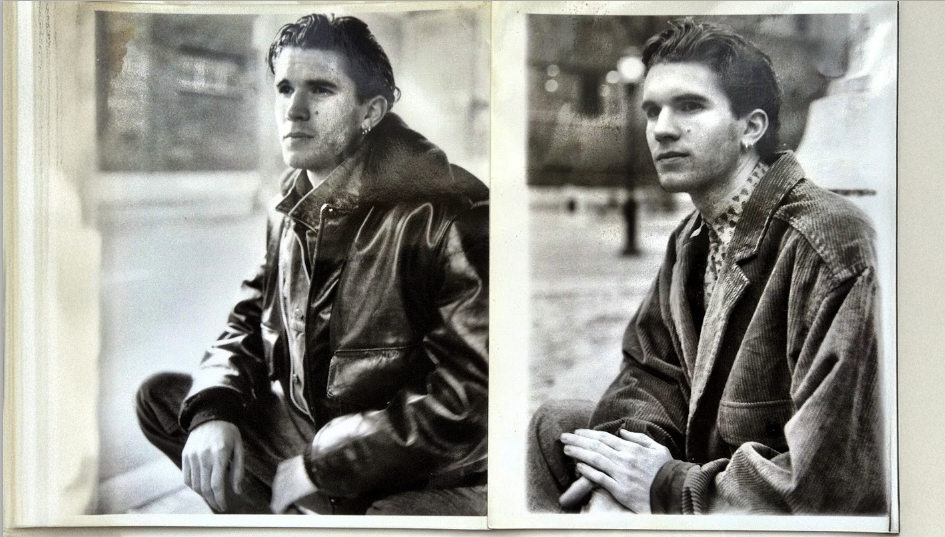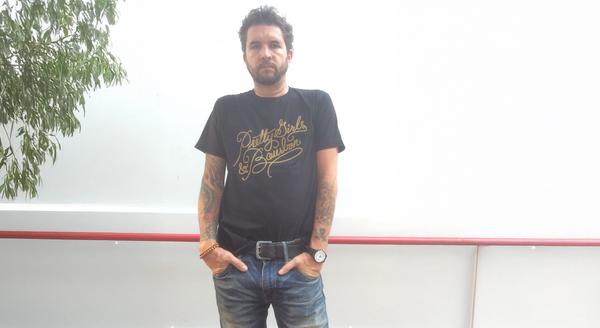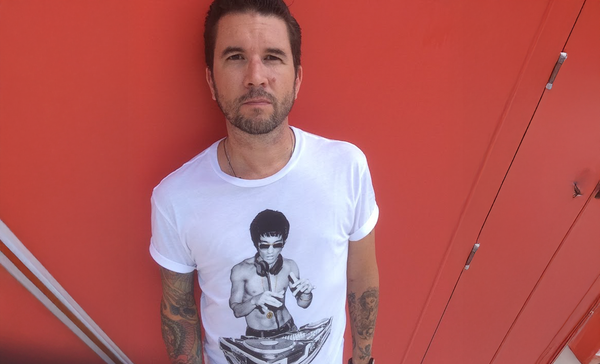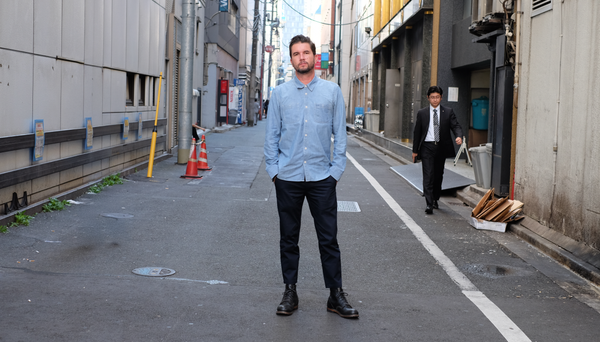What I Really Mean by an “AI-First Agency” (And Why Mine Operates More Like an Atelier Than a Factory)

I’ve struggled trying to explain what I do using traditional agency language. Because truthfully, it doesn’t look like a traditional agency anymore.
When I say I run an AI-First Agency, I don’t mean I wake up and dive headfirst into using Gemini to write copy or task an agent to show me emerging trends about the Epilogue Economy each morning.
First, I make a cup of coffee. Then I task my agent.
What I really mean is that the entire way I work, from idea to craft to output, has been re-architected and reimagined, both out of necessity and opportunity.
It’s not a tech stack. It’s more like an atelier.
I wanted to design Hotels and Restaurants.
I don’t talk much about my “Before Singapore” life. But it might set some context into how I think about my current work, and I think about RockPaperScissors as an atelier.
I moved to NYC in the early 80s, aged 19, with pretty much no idea what I wanted to be when I grew up. The first real job I landed was as a stock boy for the iconic Perris of Manhattan, a Madison Avenue boutique that sold undergarments and silk stockings to the Upper East Side and fashion houses.
From there, I worked a series of retail, F&B, and nightclub gigs – a bartender at Palladium, coat check at Area, and a waiter at both Odeon and Indochine. I sold looks to the Club Kids at Fiorucci, and stocked shelves at Canal Jeans. It was the 80s. And I felt cool.
I took a few courses at FIT and Parsons before NYC ate me up and spat me back to California, where I earned a BS in Environmental Design and a minor in Fine Arts.
By then, Fashion, Culture, and Design had found their way into my soul.
Before I could establish a foothold in the industry I had studied for, the Internet was born, and I went full digital, which I have been ever since.
Forty Years Later…
When I began RockPaperScissors in 2024, at the very ripe age of 60, it was a chance for me to bring my POV into not just the HOW an agency could work, but also the WHY.
Having worked in small, nimble shops, big, slow Holdco’s, breakthrough start-ups, and cautious NGOs, I was fortunate to learn many ways of working, from many amazing people along the way.
So when I first started talking to my wife about RockPaperScissors, I painted a picture of a studio defined by point of view, precision, and thinking systems, one where the tools of artificial intelligence let me explore further, faster, and with more dimensionality than ever before. By this time, I had already spent a couple of years in the early AI game, and believed that this then-new tech, coupled with my 30 some odd years of work and life experience, could be a game changer for us. (And yes, I was naïve about what it takes, in this market, to start a company.)
Like a Fashion House, But for Ideas. And What Makes RockPaperScissors “AI-First”
The best fashion ateliers are not built on speed or scale. They’re built on taste, imagination, and clarity of execution. They have a signature. A reason. A point of view. And that’s what I’m trying to build.
Here’s how I think about it, because this isn’t just process optimization. This is a shift in how thinking becomes output.
1. I chase Questions. The Answers will come.
Before I even think about the tools, I think about the questions. I believe that better questions lead to more questions, which eventually lead to better answers. I even wrote about how I think about questions in the Age of AI. I use AI to extend my thinking, not shortcut it. At times, I will use AI to help me identify questions I should be asking. After all, I don’t know everything.
A designer sketches dozens of lines before they cut fabric. AI is my sketchbook, but not the tailoring.
2. I think about The Brief as a Living, Breathing Thing.
The traditional brief is dead. Or at least static. Written to align, not to ignite. I wrote about this here. I treat the brief more like a bolt of fabric. Something that needs to be stretched, folded, even cut against the grain before it reveals what it’s capable of.
A good brief is not a set of instructions; it’s material that ignites my imagination. And AI helps me sketch ideas quickly, test multiple framings, and generate hypotheticals. Not because I’m indecisive, but because creativity often lives in tension, not clarity.
Most briefs are designed to remove risk. But I think the best ideas come when you move toward it. And a static brief leads to predictable answers. A living one dares you to discover what no one’s asked for yet.
The difference is this: In a traditional process, the brief narrows thinking. In an AI-first process, the brief opens it up. And then experience, pattern recognition, and taste guide what gets made.
3. I design my Workflows to fit the customer, not the rack.
Most agencies run a one-size-fits-all process. I know this because I have spent so many hours learning templates that are “best practices”. I don’t have templates, at least not now, 18 months into the work.
What has evolved, and required me to adapt my thinking, is that each project requires something very different, and most of the time, I am not doing “repeat” work for clients. They are bringing me into a new problem, a new market, and a new set of constraints.
What is also new is my way of thinking about the work. In the pre-AI days, I could not have unpacked 3 years of annual reports to find patterns in my client’s competitor. I could not have connected ideas from multiple seemingly unrelated trend reports, industry studies, or consumer profiles and find a red thread.
I couldn’t create video tests of the idea, with dialogue, cast, and wardrobe that act as a way to bring my clients into the ideas as early as possible.
My AI workbench now allows me to expand my workflows, to make the invisible steps visible, and the visible steps faster.
4. There is no internal friction slowing me down, unless I argue with myself.
This has given me a chance to evolve quickly. I don’t need to wait for consensus, or a committee, or for someone else to set direction. It's both a massive benefit, but it might become my Achilles' heel if I am choosing wrongly.
There is only me. I get to decide which tools I use, when I use them, and more importantly, when I don’t use them. I lean on my experience as an executive creative director, a strategist, a brand storyteller, the chief bottle washer, and the plumber, all rolled into one.
By necessity and opportunity, I can run a lean studio. I work with subject matter experts who teach me, sharpen my work, and even collaborate when the project requires it. I drink a lot of coffee with people who know more than I. Which means I also drink a lot of coffee these days.
My AI-first approach has meant that my creative surface area has expanded. Still, for that to be impactful, I have had to grow my knowledge, expand my network of partners, and develop a habit, a safeguard, really, of second- and third-party confirmation practices.
5. I have a point of view about many things. I have earned that.
My AI-First workbench doesn’t replace my lived and learned experience.
Over the years, I’ve built a way of seeing, through briefs, ideas, tension points, and cultural shifts. It’s not magic. It’s a long life. Trained on projects that worked, and more importantly, on the ones that didn’t. On late-night decks, wrong turns, team epiphanies, client pivots, and campaigns that lived longer than expected.
I have no issue with data-informed creative. I rely on it. Signals, insights, and feedback loops sharpen the work. They expose tension. They help frame the real problem.
But “data-driven” creative? That phrase makes me flinch.
Because too often, it doesn’t mean driven. It means boxed in. It means ideas reverse-engineered from what’s already performed, already liked, already safe. It treats creativity like a spreadsheet.
Optimized into sameness.
Great work isn’t just a response to data. It’s a response to human tension, what people feel but can’t articulate clearly. That’s where instinct matters. That’s where experience comes in.
I do believe in lived insight. In earned intuition. From a point of view years in the making.
That’s what I try to bring to the tools, a way of filtering a signal from the noise. Of knowing when something has promise, and when it’s just a shiny object. For me, this is the real superpower of an AI-first studio: not that it can generate more ideas. But that it can help me get closer, faster, to the ones that I believe are worth exploring.
6. I Train in Thinking, Not Just Tooling. I also Dog Food.
I don’t teach clients or collaborators how to use ChatGPT. I teach them how to think in layers. How to frame their problem. How to model a possibility. How to build a case instead of finding an answer.
Which means that I also have to practice what I preach. The machine doesn’t make me creative. But it does amplify whatever’s already inside me. So I work on the inside first.
And no, I don’t EAT dog food. For those unfamiliar with the term, it is a business and product development term that means I use my own processes internally to test, validate, and improve them before using them on clients’ work, or teaching them in workshops.
7. The Client Is Part of the Process.
I don’t believe in surprising my clients. That is not to say that I don’t try to bring them new thinking, new approaches, new ideas. But I believe that if I talk to them, work with them along the way, the surprise is managed and anticipated.
Gone are the days of mysterious creative alchemy behind closed doors.
An AI-first model affords me more time to be in front of them, discussing ideas before they take shape, building consensus along the way, socializing, and pressure testing. The time I save at the top of a project, the research, the ideation, the brainstorming… I try to reinvest that time back into the discussions with my clients and collaborators. While speed is always an interesting byproduct of working with AI, it doesn’t always mean that projects are done 27% faster. It might mean that I have 27% more time working with the client.
Why This Matters to Me, and maybe to You.
We don’t need more full-service agencies. God knows there are enough of those already.
But I do think there is a need for AI-first agencies, as I define them, who might be full service, who are clear about what they make, why they matter, and have a point of view along the way.
For me, AI has allowed me to try and put this into practice, and create a work culture that excites me, every day, with every project.
Some brands and agencies will understand what I am trying to build. Some are already moving in this direction. A direction that already has a label: AI-First. My tools might include GPT, Veo, Midjourney, ElevenLabs, Runway, blah blah.
But for me, having an AI-first studio is first and foremost having the judgment to use these tools as an advantage, the experience to know when, and when not, to use them, and a guiding point of view.
So if you hear me say “AI-First,” know this: It’s not about automating my way toward a rinse and repeat culture.
It’s about intention multiplied by intelligence. Artificial and Human.
And just like the great fashion houses, the signature is in the stitching.




